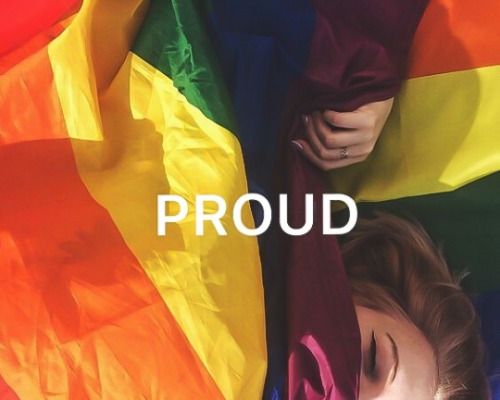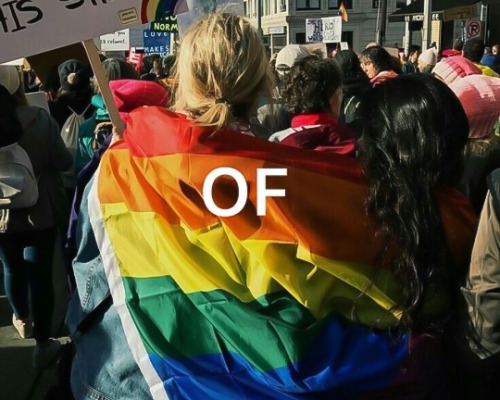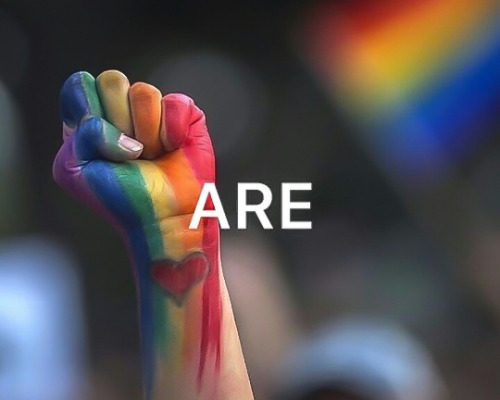I Am So, So Glad You Guys Are Loving My Trans Lesbian Daughter Aisha Bhatt As Much As I Do! It Was Really

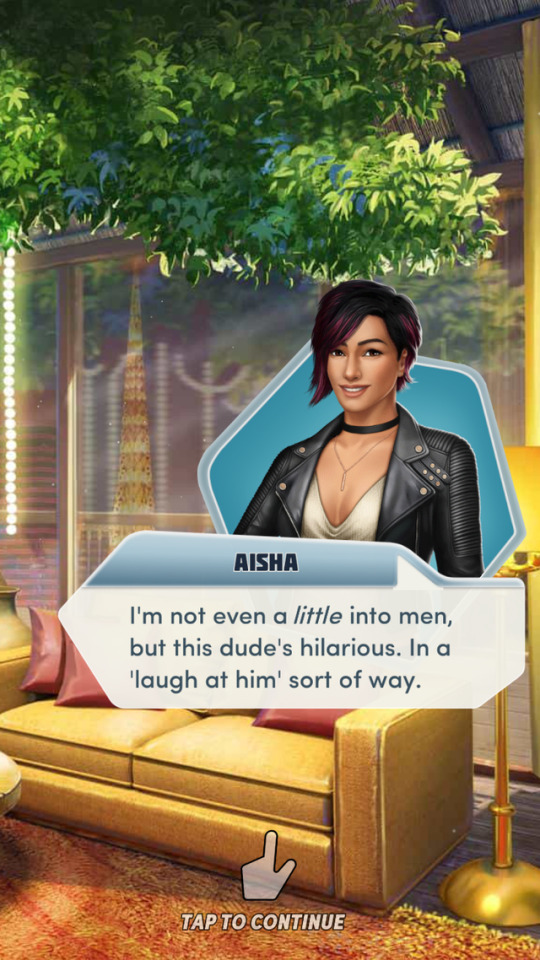
i am so, so glad you guys are loving my trans lesbian daughter aisha bhatt as much as i do! it was really important to me to be able to write a love interest who was both trans and gay, and it was also really important to me to have a flashback moment where we meet her at the very beginning of her transition. so many trans people, including myself, have the experience of desperately wanting to transition but feeling like it’s pointless to even think about it because they’ll never “pass,” let alone be considered beautiful, as their true gender. like, so much of your self-worth is wrapped up in whether or not you look like a cis person! and it shouldn’t be like that!!
so, with the college flashback scene, where we meet aisha for the first time on her first night on the town presenting as a woman, i was very specific in my notes to pixelberry’s art team: like, this is essentially Day One for aisha, she still has pretty short hair, her makeup is gonna be modest because she doesn’t have a ton of experience applying it yet, and she’s not exactly “passing” perfectly, but that doesn’t matter! fuck that! what matters is that she’s finally getting to be who she is and she’s radiantly happy about it and her friends are behind her 110%! and she’s taken her first step on this road and she’s gonna continue on that road and we will meet her again in adulthood as an exquisite butch in a leather jacket and a cool pixie cut.
anyway!! i can’t wait for you all to get to know aisha on this wild vegas journey. for those of you who aren’t in the choices fandom already, you can download the choices: stories you play app on the app store and click on “bachelorette party” to meet her!!
More Posts from Snowwritings and Others
I kept myself from writing my own original fiction for a long time because I worried so much about not writing “like other writers”.
I’d read an amazing book and want to make a reader feel all the things I was feeling, but then decided “well, there’s no way I can write like THAT” and whatever inspiration I had would die.
Listen. You don’t have to write like other writers. You have to write like YOU.
No one can write the way you can, because your voice belongs to you and only you.
I finally stopped listening to the voice that told me I shouldn’t write because I wouldn’t be as good as other writers. And when I did, I wrote a book in a little over a month.
Write the stories that you would want to read. Write the stories that you’ve been hiding in your heart.
Write them, because no one else can.
Anon or not, make me choose between:
Show: _______ or ________ ?
Character: ________ or _________ ?
Pairing: _________ or _________ ?
Anything: ________ or _________ ?
also, on this blessed day of trans visibility, here’s a reminder to cis people not to be gross when showing support. you talking about how hot and sexy you think trans people are isn’t you supporting and empowering us, it’s you fetishizing us and it harms us.
also when showing support if you could refrain from saying cisnormative stuff like “wow you look so good you can hardly tell you’re trans” or “you look like more of a girl/guy than i do!!” bc that just implies “looking trans” is a bad thing, or that trans people even look a certain way to begin with, or that trans people are inferior to cis people. just give us regular compliments like you would anyone else.
and of course, don’t ask for deadnames or pre-transition selfies. if a trans person wants you to know, they’ll tell you themselves. if they want you to see what they were like pre-transition/in the closet they’ll show you. bringing that shit up can be very triggering, or it might not bother them at all but either way it’s none of your business and it isn’t your right to ask.
if anyone has any other things cis people should be cautious of for tdov feel free to add on, make sure nobody gets hurt.
I had a baby with Shale in camp and I cried.
Gee, I wonder why 😅

Dragon Age Story Generator. @a-shakespearean-in-paris & @kagetsukai thought you’d find this fun!
Well said. I have just been way more busy lately, but yeah, it is discouraging when I do manage to write something it only gets like a third of the notes now. I am so extremely appreciative of those people, even one note is amazing really, but it really makes you start to wonder if people are losing interest in your work. Or just do not like it.
I think you’re right, some of the content creators I knew almost dont post anything anymore. Those who do get less traffic unless they’re style is really good, on hype or if they’re content includes Kamilah (since she’s really popular). All I see in my dash are shitposts whether funny, edgy etc. and they’re the ones who gets most traffic. I still like those but its like 70% shitposts and 20% fanfics, 10% edits, fanarts, aesthetics etc. I just miss seeing more creative content in my dash.
This is very true. People stopped creating original content and started making more shitposts than ever, but that’s probably because of notes. Someone that doesn’t like a certain character, won’t like or rb a post, while a shitpost speaks to everyone. It’s sad to see so many great writers/editors/artists stop posting their stuff, bc of some notes. They seem to think that their stuff is unimportant, even though that’s what a fandom is about. When they get like 60 notes, while a not very funny post gets 1k in one night, its not very surprising that they feel discouraged.
This is a wonderful idea. Thank you to the both of you for creating a great place to spread even more love in the fandom.

What is choicesspotlight?
Choicesspotlight is a blog, made by @aryn-choices and @faded-hero for all the new blogs in the choices fandom, that have a hard time to get noticed.
What are the guidelines?
The only thing we need is »
An ask with the following things:
▫️URL of the blog
▫️A small description of your creations (fanfic, fanart, theories, icons etc.)
▫️And your favorite books
If someone else wants to give you a shout out, we’ll only need the URL in an ask and will do the rest!
I also often feel the emotions my characters are going through.
things writers can (probably) relate to
-making the facial expression your character’s making and trying to describe it
-writing entire scenes in your head as you shower and not remembering most of it by the time you get to your computer
-deciding you can’t do something you’ve been looking forward to until you write what you told yourself you were going to write, resulting in you laying in your bed doing nothing
-having two completely different ideas for your story to go in and both seem equally good but you can’t do both and you also can’t choose
-having docs with stories you know you’ll never finish but not deleting them anyway, even if they’re only a couple sentences long
-getting random bursts of productivity that could go towards homework or cleaning your room or writing and you know you’ll only be able to do one
-getting inspiration from the most random things
-writing at inopportune times because a perfect line or dialogue just popped into your head and you have to get it down before you forget it
-“what are you writing?” “……..a story”
- “what do you want to do when you grow up?” “uunnghnnggguughhhhh”
-reveling in the embarrassment you put your characters through
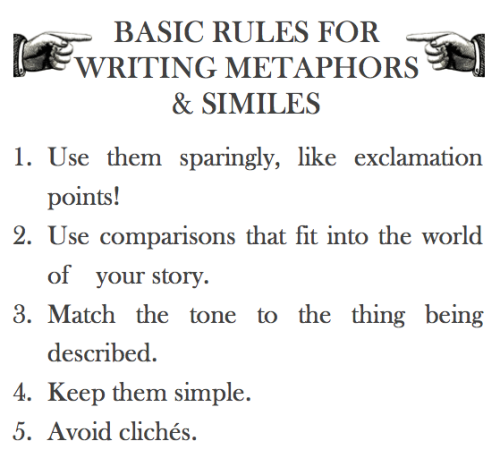
RULE #1: Use them sparingly.
Comparisons draw attention to themselves, like a single red tulip in a sea of yellow ones. They take the reader out of the scene for a moment, while you describe something that isn’t in it, like you’re pushing them out of the story. They require more thought than normal descriptions, as they ask the reader to think about the comparison, like an essay question in the middle of a multiple choice test. They make the image stand out, give it importance, a badge of honor of sorts.
Use too many comparisons and they become tedious.
Elevating every single description is like ending each sentence with an exclamation point. Eventually, the reader decides no one could possibly shout this much, and starts ignoring them.
For these reasons, you should only use metaphorical language when you really want to make an image stand out. Save them for important moments.
RULE #2: Use comparisons that fit into the world of your story.
If you’re writing from the point of view of a character who’s only ever lived in a desert, having that character say, “her look was as cold as snow” doesn’t make much sense. That character isn’t likely to have experienced snow, so it wouldn’t be a reference point to them. They’d be more likely to compare the look to a “moonless desert night” or something along those lines.
Using a comparison that ties to the character’s history or the setting of the story also do work to build the world of the story. It gives you a chance to show the reader exactly what your character’s reference points are, and builds the story’s world. If your reader doesn’t know that desert nights can get cold, this comparison informs both the things its describing: the other character’s look and the desert at night.
Here’s a metaphor from The Hitchhiker’s Guide to the Galaxy:
If you took a couple of David Bowies and stuck one of the David Bowies on the top of the other David Bowie, then attached another David Bowie to the end of each of the arms of the upper of the first two David Bowies and wrapped the whole business up in a dirty beach robe you would then have something which didn’t exactly look like John Watson, but which those who knew him would find hauntingly familiar.
He was tall and he was gangled.
This is a bizarre comparison, but it’s also a bizarre story. What’s more, David Bowie is known for his persona “Ziggy Stardust” and songs like “Space Oddity.” Bringing him up in a book about a man from Earth traversing the galaxy makes sense. What’s more it increases both of those aspects of the story: its ties to space and its bizarre-ness. The comparison unifies the story and the language being used to tell the story.
Using comparisons that fit into the world ensures that everything is working to help tell the story you want to tell.
RULE #3: Match the tone to the thing being described.
Or, match it to the way you want the thing being described to come across. It has to match what you want the reader to feel about the thing being described.
Here’s an example from Mental Floss’s “18 Metaphors & Analogies Found in Actual Student Papers” (although I think it’s actually from a bad metaphor writing contest):
She had a deep, throaty, genuine laugh, like that sound a dog makes just before it throws up.
You’re not imagining a laugh right now, are you? You’re imagining a dog throwing up. Whoever this girl is, you’re going to make sure never to tell a joke in front of her.
This is not getting the right point across.
Remember the David Bowies? Remember how the comparison was fun and bizarre, just like the tone of the book is fun and bizarre?
This is not David Bowies stacked on top of one another.
It’s not enough for a comparison to be accurate. It has to bring about the same emotions as the thing it’s describing.
If this is being told from the point of view of a character who hates the laughing character and we’re supposed to hate her and her laugh. It actually does work, but from the use of the word “genuine,” I don’t think this is the case.
Make sure you always pay attention to the tone of the comparison.
RULE #4: Keep them simple.
Don’t use a comparison that requires too much thought on the reader’s part. You never want anyone sparing even a moment on the question: “but how is x like y?”
Here’s another example from that Mental Floss list:
Long separated by cruel fate, the star-crossed lovers raced across the grassy field toward each other like two freight trains, one having left Cleveland at 6:36 p.m. traveling at 55 mph, the other from Topeka at 4:19 p.m. at a speed of 35 mph.
Again, this is a humorous example. It’s supposed to be bad, but many writers have made mistakes like it. They choose two images that don’t have enough in common for the reader to make an easy and obvious comparison between the two. Sometimes, the writer subconsciously acknowledges this, and expands the comparison to a paragraph, detailing the ways the two things are alike.
If you find yourself doing this, take a step back and ask yourself if this is really the best comparison to be using. The best comparisons are the simple ones. All the world’s a stage. Conscience is a man’s compass. Books are the mirrors of the soul.
What about that David Bowie quote, you ask? Douglas Adams broke this rule, but he broke it purposefully to get that bizarre quality to the language. He still avoids reader confusion, the reason for this rule, by bringing the comparison back to its point at the end: “he was tall and he was gangled.”
RULE #5: Avoid cliches.
The best comparisons are fresh ones. No one wants to hear that she had “skin as white as snow” and lips “as red as roses” anymore. The slight understanding it brings to the description isn’t worth the reader’s groans when they realize you just made them read that again.
A cliche is a waste of space on the page. It’s not going to be the memorable line you want it to be. It’s not going to awe the reader.
Good similes in metaphors require some creative thinking.
In the vein of rosy lips and snow-colored skin, here’s a fun example from Harry Potter and the Chamber of Secrets. It’s the poem that Ginny wrote for Harry on Valentine’s Day:
His eyes are as green as a fresh pickled toad,
His hair is as dark as a blackboard.
I wish he was mine, he’s really divine,
The hero who conquered the Dark Lord.
These aren’t comparisons you’re like to have come across before and their originality comes from rules #2 and #3. Rowling needed comparisons that fit in Ginny’s frame of reference. She also needed comparisons that were humorously bad, as they’re being recited by a grumpy creature dressed in a diaper, who is sitting on Harry’s ankles, forcing him to listen.
As a witch at school, blackboards and fresh pickled toads fit Ginny’s frame of reference. Neither are particularly known for being nice to look at, so they fit the tone, too.
Using her character, setting, and tone, using, in other words, her story, Rowling was able to create similes that are unique and memorable.
It’s the same thing Adams did with his Bowie analogy.
If you, too, use your story to inform your language, writing new and wonderful similes and metaphors should be just as simple.
-
 dontbotherwiththepronunciation liked this · 3 months ago
dontbotherwiththepronunciation liked this · 3 months ago -
 cozmostreet liked this · 1 year ago
cozmostreet liked this · 1 year ago -
 farah-phoebe reblogged this · 1 year ago
farah-phoebe reblogged this · 1 year ago -
 farah-phoebe liked this · 1 year ago
farah-phoebe liked this · 1 year ago -
 spooky-transbian reblogged this · 1 year ago
spooky-transbian reblogged this · 1 year ago -
 transkang reblogged this · 2 years ago
transkang reblogged this · 2 years ago -
 iamaniconicmess liked this · 2 years ago
iamaniconicmess liked this · 2 years ago -
 horni-transbian liked this · 3 years ago
horni-transbian liked this · 3 years ago -
 squid-princess-teach-swallow liked this · 3 years ago
squid-princess-teach-swallow liked this · 3 years ago -
 koko-heads liked this · 3 years ago
koko-heads liked this · 3 years ago -
 starfurrry liked this · 3 years ago
starfurrry liked this · 3 years ago -
 gamegameygames reblogged this · 3 years ago
gamegameygames reblogged this · 3 years ago -
 otakudreamer liked this · 3 years ago
otakudreamer liked this · 3 years ago -
 spooky-transbian reblogged this · 3 years ago
spooky-transbian reblogged this · 3 years ago -
 cassie-thorne liked this · 3 years ago
cassie-thorne liked this · 3 years ago -
 casharlow liked this · 3 years ago
casharlow liked this · 3 years ago -
 mauvecatfic liked this · 3 years ago
mauvecatfic liked this · 3 years ago -
 playthatbook liked this · 3 years ago
playthatbook liked this · 3 years ago -
 peonierose liked this · 3 years ago
peonierose liked this · 3 years ago -
 ratanslily liked this · 3 years ago
ratanslily liked this · 3 years ago -
 ratanslily reblogged this · 3 years ago
ratanslily reblogged this · 3 years ago -
 you-dumb-simp reblogged this · 3 years ago
you-dumb-simp reblogged this · 3 years ago -
 you-dumb-simp liked this · 3 years ago
you-dumb-simp liked this · 3 years ago -
 transwaterbender liked this · 4 years ago
transwaterbender liked this · 4 years ago -
 mcuslut liked this · 4 years ago
mcuslut liked this · 4 years ago -
 itsdarinapie liked this · 4 years ago
itsdarinapie liked this · 4 years ago -
 mrslimaberg liked this · 4 years ago
mrslimaberg liked this · 4 years ago -
 alesbianplayinggame reblogged this · 4 years ago
alesbianplayinggame reblogged this · 4 years ago -
 just-anothers-posts liked this · 4 years ago
just-anothers-posts liked this · 4 years ago -
 thestronglead-theweakbleed reblogged this · 4 years ago
thestronglead-theweakbleed reblogged this · 4 years ago -
 episodeohboy liked this · 4 years ago
episodeohboy liked this · 4 years ago -
 renkiee liked this · 4 years ago
renkiee liked this · 4 years ago -
 spooky-transbian liked this · 5 years ago
spooky-transbian liked this · 5 years ago -
 hernetaksi liked this · 5 years ago
hernetaksi liked this · 5 years ago -
 jolesofthehowls liked this · 5 years ago
jolesofthehowls liked this · 5 years ago -
 s1ut4nat liked this · 5 years ago
s1ut4nat liked this · 5 years ago -
 caiotlyn liked this · 5 years ago
caiotlyn liked this · 5 years ago -
 agentsheryl reblogged this · 5 years ago
agentsheryl reblogged this · 5 years ago -
 macaroniandcheese liked this · 5 years ago
macaroniandcheese liked this · 5 years ago

Sofia. She/her. Writer, thinker, listener, trans woman, and supporter of the Oxford Comma.
172 posts

